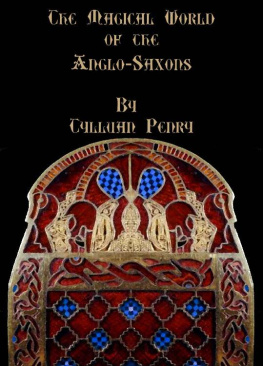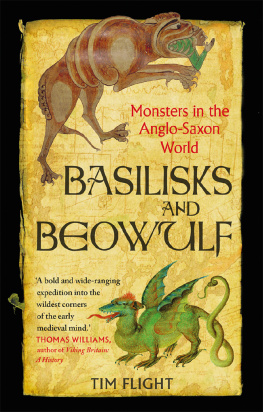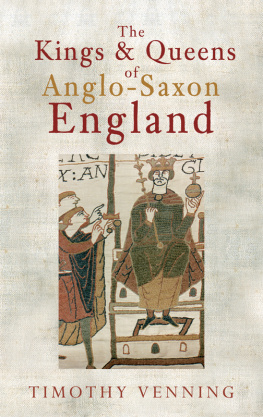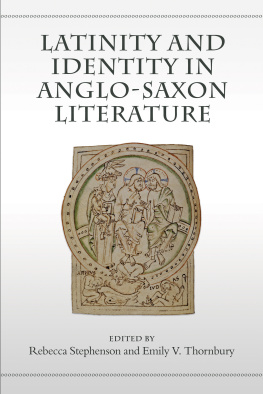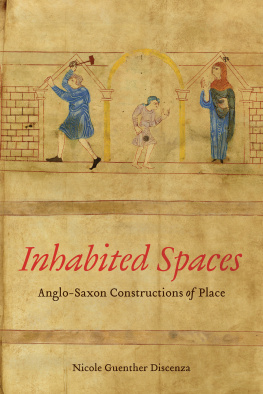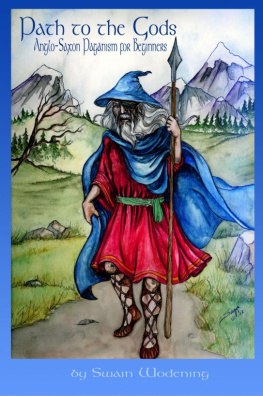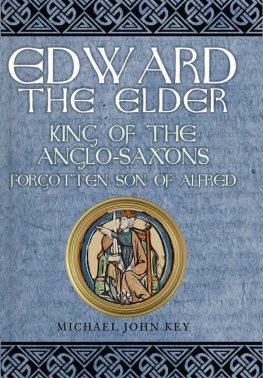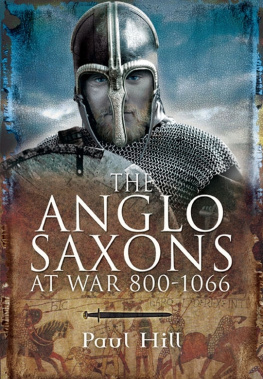The Magical World of the Anglo-Saxons
Tylluan Penry

The Wolfenhowle Pres s
The Magical World of the Anglo- Saxons
Copyright 2012 Tylluan Penry
ISBN 978-0-9570442-2-7
ALL RIGHTS RESERVED
Tylluan Penry has asserted her right under the Copyright Designs and Patents Act of 1988 to be identified as the author of this work.
No part of this publication may be reproduced, stored in a retrieval system or transmitted in any form or by any means, electronic, mechanical, photocopying, scanning, recording or otherwise without the prior written permission of the author and the publisher.
Cover Design and Illustrations by Drew Thomas
Published by: The Wolfenhowle Press,
Redcroft, Nile Road,
Trealaw,Tonypandy CF40 2 UY
www.thewolfenhowlepress.com
Printed by : PrintVend Ltd, Unit H1 Bath Road Trading Estate, Lightpill, Stroud, Gloucestershire GL5 3QF
This book is dedicated with love to CEJT - great daughter, wife, mother and warrior for justice!

Other Titles by Tylluan Penry :
Staying on the Old Track, published by The Wolfenhowle Press 2012
Magic on the Breath (published by The Wolfenhowle Press, 2011)
The Essential Guide to Psychic Self Defence (published by Capall Bann 2010)
The Magical Properties of Plants - and How to Find Them (published by Capall Bann, 2009)
Seeking the Green (published by Capall Bann, 2008)
Also Eating With the Dead: Funeral Meal Practices in the anthology Memento Mori (ed. Kim Huggens) Avalonia Books 2012
A note about references....
References are placed within the text of this book using the Harvard style of referencing, i.e. Author, Year and, where appropriate, page number. This is much neater and easier than struggling to find endnotes after each chapter. If you wish to consult the referenced work for yourself, just go to the Bibliography at the end of this book and look up the cited author; you will find the full reference set out there.
Where possible I have used Grendons (1909) translation of the charms since this is available online so that you can access a wide range of charms, both in translation and the original Anglo-Saxon for yourself.
Contents
Chapter 1 Beginnings
Who were the Anglo-Saxons? 2
Chapter 2 Place Names 6
Chapter 3 What the dead can tell us . 15 Human sacrifice 19
Other curiosities regarding burial... 21
Chapter 4 Dragons and Wyrd 27
Chapter 5 How they lived 38
Chapter 6 More about beliefs and practices 46
Chapter 7 The Resistance to Christianity 57
Chapter 8 Women, children and family 65
Chapter 9 Changing the gods into mortals and devils 71
Chapter 10 Horses and Priests 79
Chapter 11 H ow and what they celebrated 83
Chapter 12 Amulets and charms 93
Chapter 13 Variety in Magic 100
Chapter 14 Divination and curses 109
Curses 111
A word on the Runes... 113
Chapter 15 Christianising Magic 116
Chapter 16 The Land Remedy Charm 122
Other Land Charms 128
The Nine Herbs Charm 130
Chapter 17 Symbols, Words and Other Magical Methods 136
Names and Words of Power
Magic Symbols
Other magical methods
Spells and the body
Special times of day
The Just as...so may formula
The role of Water
Magic lines
Chapter 18 Anglo Saxon Magical thinking 155
Counting out 158
Using Intimidation in Magic 160
Chapter 19 Numbers and Elves 163
Number Nine 164
Using the sign of the cross 164
Elves 165
Chapter 20 Plants 169
The Mother-Die plants 173
Demonising plants 177
Other plant remedies 182
Leeches 186
And finally.... 187
Bibliography 189
About Tylluan Penry
Tylluan Penry is a solitary pagan witch, independent scholar and the author of books on magic and folklore including Staying on the Old Track, Seeking the Green, The Magical Properties of Plants and how to find them, The Essential Guide to Psychic Self Defence and Magic on the Breath.
She is a popular and regular speaker at various events including Witchfest International, The Artemis Gathering, Witchfest England and Witchfest Wales. She has also given talks for the Pagan Federation, and at independent, private events. Her articles have appeared in a variety of publications including Witchcraft & Wicca and Myddle Earth and she is regularly consulted by the media for advice in portraying witchcraft and paganism.
Tylluan has her own internet radio show, The Magical World of Tylluan Penry at www.oneworldradio.org.uk , and her programmes are also available as free podcasts from http://tylluanpenry.podbean.com/
Tylluan is married, has a large family, many pets, an overgrown garden and lives with Mr Penry, her love of many lifetimes, in the South Wales Rhondda Valley.

Preface
This is a book about the magical world of the Anglo-Saxons, written from the point of view of someone who believes in, and practices magic herself. So although I have included plenty of references to guide you towards further reading, the emphasis here is on the magical thinking behind what they did and thought. In other words, why and how the Anglo-Saxons believed in magic. And to understand that, we have to be aware of how they viewed the world around them.
In school if we are lucky most of us learn just the basics: that the Anglo-Saxons invaded after the Romans left, fought King Arthur and quickly converted en masse to Christianity. Then other invaders, the Vikings or Norsemen, rolled in and were fought by King Alfred the Great when he wasnt burning the cakes. Generally speaking though, the whole Saxon period was relegated to the Dark Ages a term that conjures up images of savages living in primitive huts, frightened of elves and ghosts, unable to read, write or do very much at all.
None of this is true. Writing this book taught me that they were clever, artistic, skilled in metalwork and poetry, fond of drinking, jokes, riddles, singing and generally enjoying themselves. I learned a great deal from them.
Above all, I learned that all knowledge is a voyage, and this book can only be a tiny part of that journey. Experiencing it requires nothing more than allowing yourself to dip into the pages on a warm summers day in the park, or a cold winter evening by the fire. The magic is still there if only we have the courage to reach out and touch it.
Brightest Blessings
Ty lluan Penry
C hapter One
Beginnings
W
hen we begin looking for evidence for the magical world of the Anglo-Saxons, we can often feel we are chasing shadows. Even apparently simple questions, such as Who, what, where and when were the Anglo-Saxons? are deceptively complex. Its vital to understand the different types of evidence available to us, and the problems inherent with each.
For example, archaeology can show us the type of houses people lived in, but cannot tell us what people thought of them, or the games played by the children who lived in them. So archaeology can provide only some evidence about the way people lived. Also, physical evidence tends not to be very representative of society as a whole, since so much of what has survived was only ever used by a small, elite group. An ornate jewel might tell us what the well-dressed Saxon noblewoman wore, but little about her peasant counterpart. In any society, the poor normally take their thoughts, beliefs and secrets with them to the grave.

